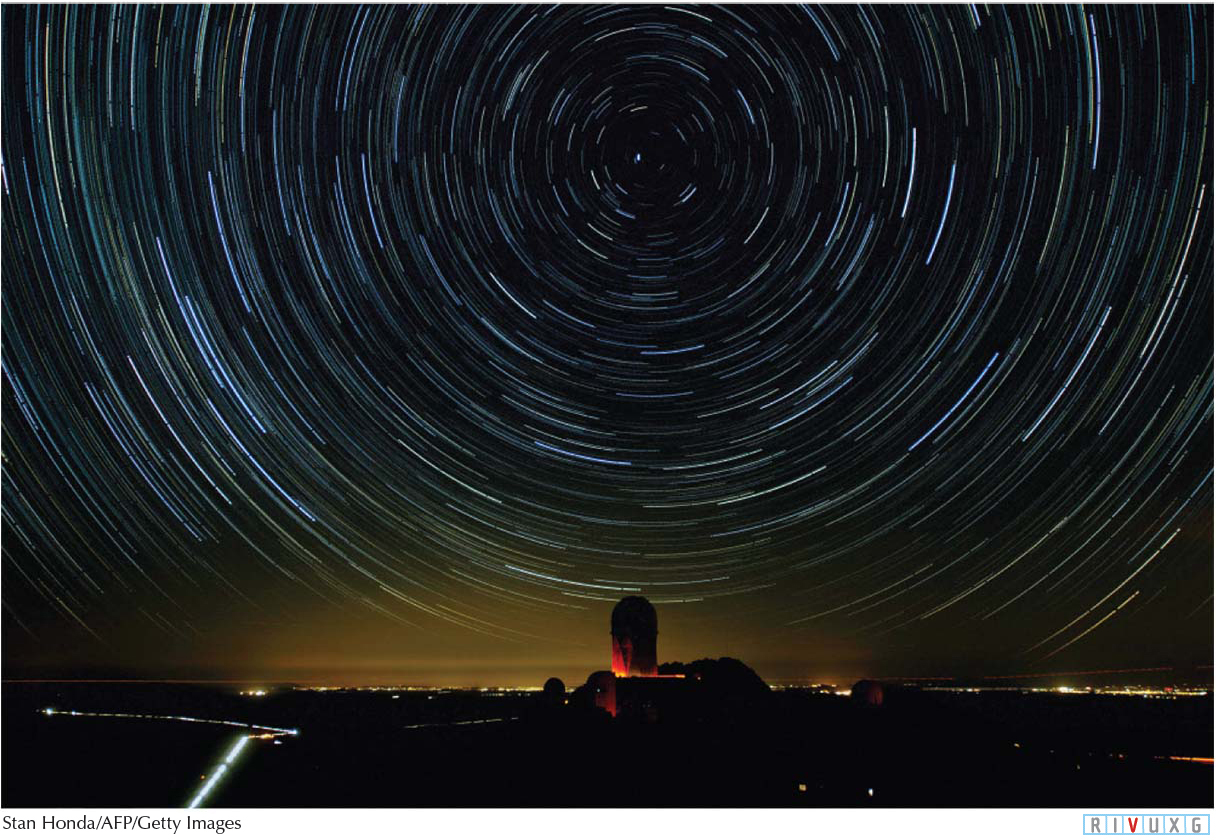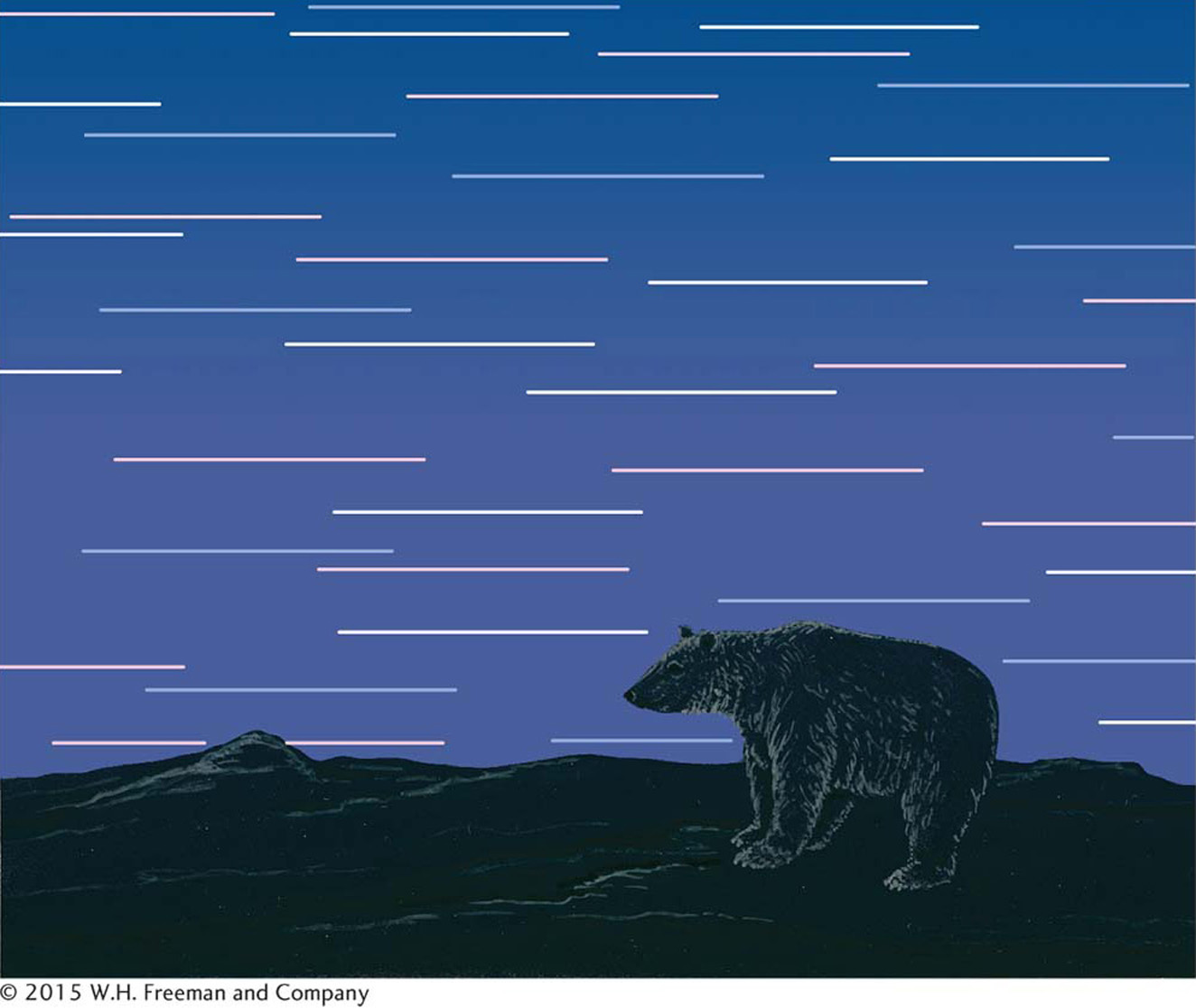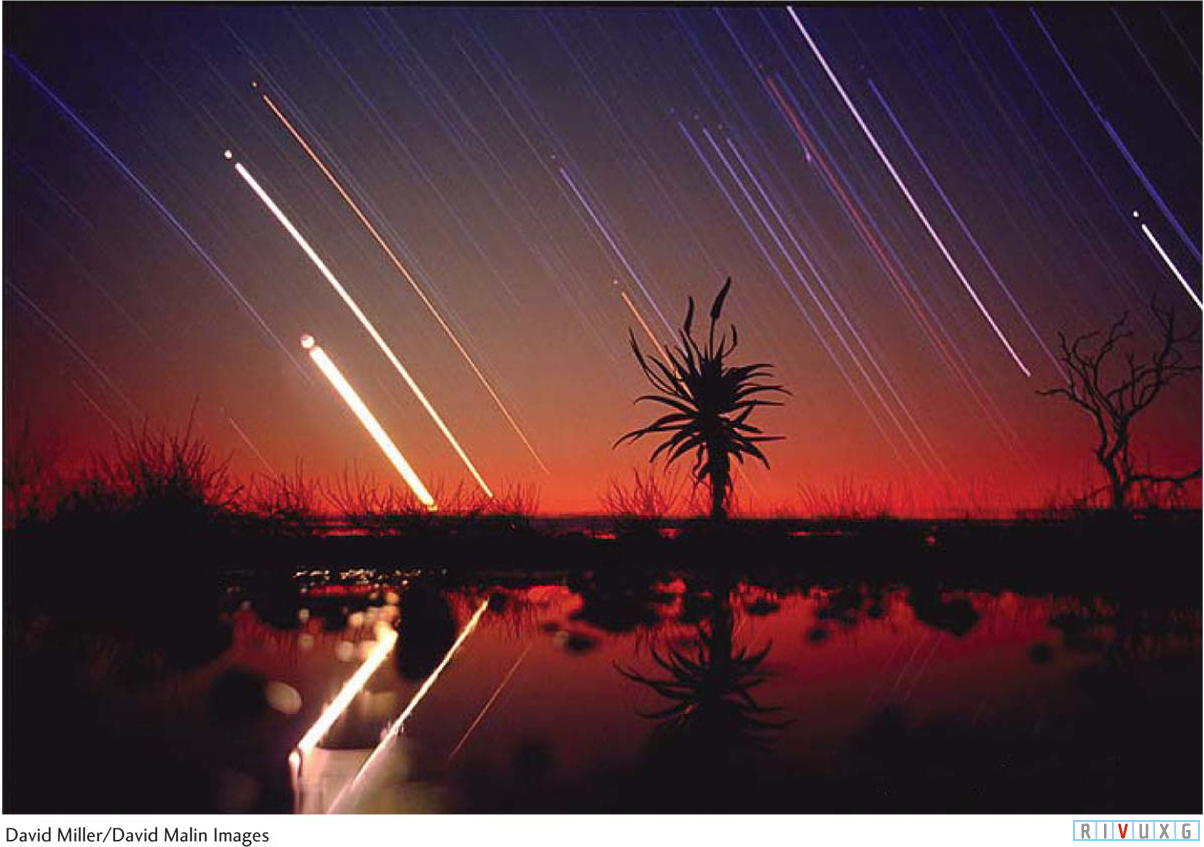EARTHLY CYCLES
Earth spins on an axis running between its north and south poles, and it moves in an orbit around the Sun. We will now explore how these motions create the day-
1-6 Earth’s rotation creates the day-night cycle and its revolution defines a year
Focus Question 1-2
Why are asterisms like the Big Dipper seen sometimes upright and sometimes upside down?

 Circumpolar Star Trails Stars appear to rotate around Polaris, the North Star (small arc near point around which all arcs appear to orbit). Those stars that pass between Polaris and the horizon directly below it are circumpolar. The 4-
Circumpolar Star Trails Stars appear to rotate around Polaris, the North Star (small arc near point around which all arcs appear to orbit). Those stars that pass between Polaris and the horizon directly below it are circumpolar. The 4-
RotationThe spinning of a body on an axis running through it is called rotation. We do not feel Earth’s rotation because our planet is so physically large compared to us that Earth’s gravitational attraction holds us firmly on its surface. Earth’s rotation causes the stars—
Depending on your latitude, some of the stars and constellations never disappear below the horizon. Instead, they trace complete circles in the sky over the course of each night (Figure 1-
If you live in the northern hemisphere, Polaris is always located above your northern horizon at an angle equal to your latitude. Only the stars and constellations that pass between Polaris and the land directly below it are circumpolar. As you go farther south in the northern hemisphere, the number of stars and constellations that are circumpolar decreases. Likewise, as you go farther north in the southern hemisphere, the number of stars and constellations that are circumpolar also decreases.
Now visualize yourself at the equator. All the stars appear to rise straight up in the eastern sky and set straight down in the western sky (Figure 1-
As you can see from these last two mental exercises, the angle at which the stars rise and set depends on your viewing latitude. Figure 1-
9

 Rising and Setting of Stars at Middle North Latitudes Unlike the motion of the stars at the poles (see Figure 1-
Rising and Setting of Stars at Middle North Latitudes Unlike the motion of the stars at the poles (see Figure 1-

RevolutionWhereas rotation is the spinning of an astronomical object around an axis through it, revolution is the motion of any astronomical object around another astronomical object. Earth takes 1 year, or about 365¼ days, to revolve around the Sun. A year on Earth is measured by the motion of our planet relative to the stars. For example, draw a straight line from the Sun through Earth to some star on the opposite side of Earth from the Sun. As Earth revolves around the Sun, that line inscribes a straight path on the celestial sphere (namely, the ecliptic) and returns to the original star 365¼ days later. The length of any cycle of motion measured with respect to the stars is called a sidereal period. Earth’s annual orbit around the Sun, 1 year, is a sidereal period, as is the period of the diurnal motion of the stars each day in our sky. This latter period is 23 h 56 m 4 s.
Insight Into Science
Define Your Terms As with interpersonal communication, using the correct words is very important in science. Scientific words usually have a specific meaning, such as “rotation” denoting spin and “revolution” meaning one object orbiting another. Be especially careful to understand the context in which words with more than one meaning, such as “ecliptic” and “constellation,” are used.
Different constellations are visible at night during different times of the year because of Earth’s revolution around the Sun. If Earth were rotating at a fixed place over the Sun, rather than orbiting around it, then every star would always rise and set at the same time every day. Of course, Earth is in motion around the Sun, and as a result the Sun moves around the celestial sphere and the stars rise approximately 4 minutes earlier each day than they did the day (or night) before. This effect accumulates, bringing different constellations up at night throughout the year. Figure 1-
10
Six months later, when the Sun is “in” Pisces, that half of the sky is filled with daylight, while Virgo and the constellations around it are high in the night sky (see Figure 1-